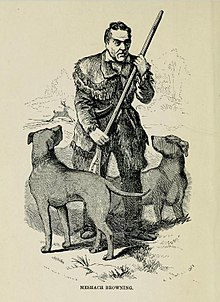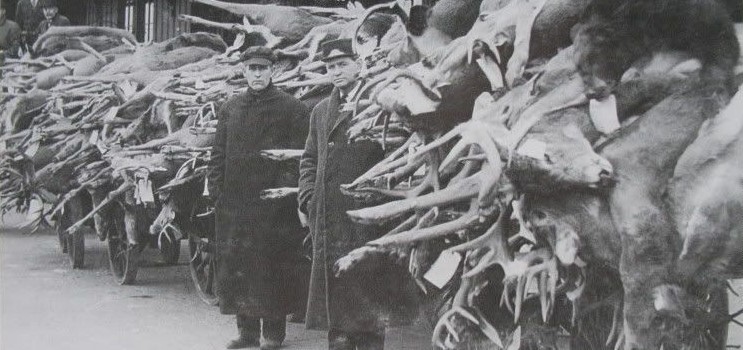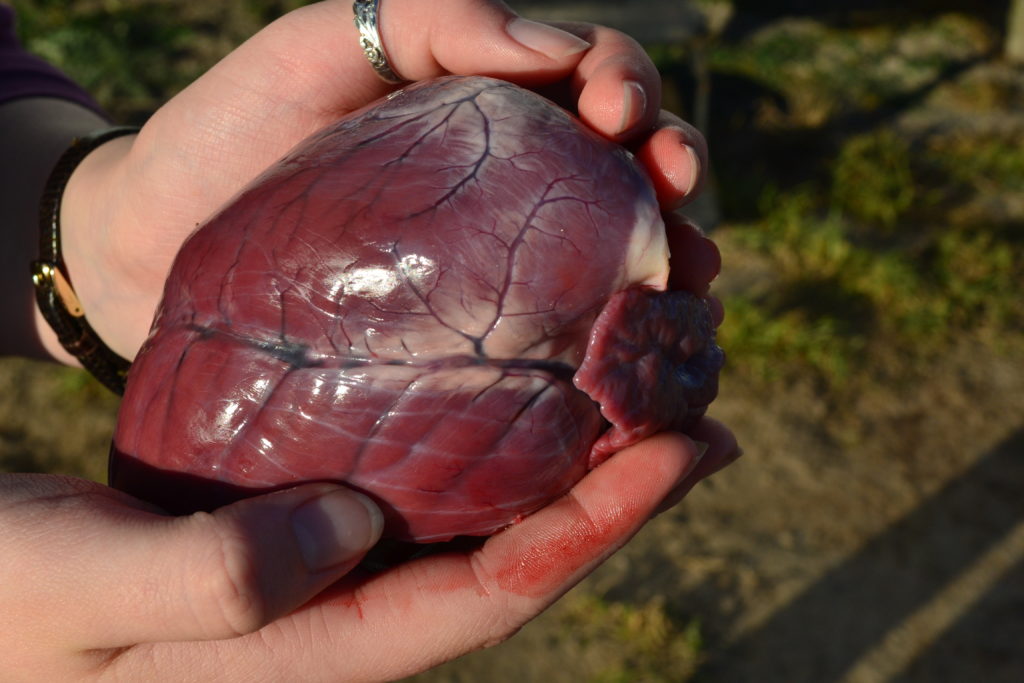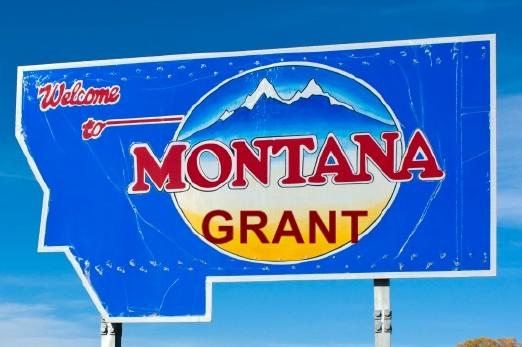11 Apr BUTCHERING!!!
Processing or Butchering is the step that happens after the critter is down. This gruesome, messy, and bloody job is essential for preparing the deer for the meal.Many hunters leave this job to the professionals and pay the Butcher to complete the job. Others just give the meat away to Soup Kitchens. Why anyone would not enjoy the harvest is beyond many hunters but…

Meshach Browning was an eastern Mountain Man that made a living off shooting deer, elk, catamounts, and bears. He was a master at killing, dressing, and butchering his kills. Much of these skills were learned from the native peoples. His home was in Grantsville, Maryland, but he roamed the western mountains of Pennsylvania, Maryland, and West Virginia. I am sure that Browning passed through and hunted the Dannerholz property in the late 1700’s.
Back in the day, hunters needed to rely on what they had. Weapons were primitive and less accurate. That meant you needed to get closer and have a backup weapon or reload strategy. If you didn’t, hunters would not grow old. Their lives would be quickly ended by a critter, Indian, accident, or illness.
The main meat food source at the time was the eastern White-tailed deer. This meat was desired by pioneers, native peoples, and markets back in the cities. The hides were also a wonderful source of leather. Does and fawns were preferred by early hunters. Big, old deer were “not as tasty or tender”. They were also harder to kill.
Butchering was done Indian style. If the hide was to be used, they would strip it off while the carcass was warm. Starting at the head/neck, they would cut and begin to pull the hide. A rock would be tied into a knot at the hides neck. The hide, from the knees to the body, would be loosened. If they had a pony, the horse could pull the rope, tied to the rock. The hunter would hang on to the back end of the deer. The hide would pull off in one piece.
Now the beast was put onto its belly. If game was plentiful, only the large prime cuts were taken. Loins, shoulders, legs, and upper rips. The rest was left. If the meat was to be transported, it may be left in bigger portions for easier carry. Fat would get rancid easily and was often thrown away unless the hunter had time to eat it fresh or process it. Large folds of fat along the rump and back were called “fleeces” or “depouilles”. The tongues were a delicacy and removed. Hearts and liver were also preferred and eaten raw or soon after the hunt. A tomahawk was the perfect butchering axe for quartering out a deer. Small intestines were filled with smaller pieces of meat, berries, or nuts, and steamed like sausages or Boudins.
Meshach Browning sold many of the deer he killed to the “Big City” markets. His deer were often gutted, kneed, and the head was removed. The hide was left on the carcass to protect the deer meat during transport and keep the hide fresher. Travois or wagons were used to transport the carcasses to a railway station. Buyers would pay the hunter and the trains transported the carcasses to town.

If the meat was for dinner, big chunks were placed on sharp sticks and placed around the fire to cook. Spices included a bit of salt or gunpowder! Most meat was eaten rare. Big fires and smells would attract unwelcomed guests, predators, and enemies. Deer meat was too tough when cooked too much. The loins and upper rumps were the best.
Large leg bones would be placed in the fire to bake. Once blackened and brittle from the coals, the Tomahawk would be used to crack them open and enjoy the marrow. This was often the breakfast meal, after the bones slow cooked all night on a low fire.
Deer testicles were considered a choice treat! Baked, boiled, or fried, these nuggets added more protein to the diet. If the deer was pregnant, the fetus’s stiffer legs were removed, and the rest of the veal like meat was consumed. Udders were considered more of a delicacy than the testicles or tongue!

If the hunter had enough time, they would make Pemmican or “jerk their meat”! Meat strips, cut with the grain of the meat, were dried in the sun and wind. Salt would be added to their meat and hung on racks to dry. After a few days, it could be wrapped in bark and transported. As the Jerky aged, it was beaten into a dry powder and mixed with berries or crushed nuts. Gristle and sinews would need to be removed. Next, they added some rendered fat to the dry mix and pressed it into cookies. This snack would last until needed.
Meshach Browning did not have any deer tag limits during his hunting life. Seasons were year around and there were no restrictions. No one knows for sure how many critters he harvested during his Years as a Hunter. He was afield for over 40 years using his rifle and hunting knife. From his memoirs, he suggests that he killed from 1800-2000 deer. 300-400 bears, about 50 catamounts or panthers, along with scores of wolves and wildcats. This was not about bragging rights, just facts. He had no mounted deer on his walls.
His “Labor of Love” provided for his family and survival. Close encounters with wounded deer, cats, Indians, and bears almost cost him his life on several occasions. The mountains were his home too!
Deer hunters of today approach the sport much differently. Our day trips to the tree stand are comfortable. We use modern weapons with accurate optics and range finders. Limits and seasons are controlled and protected. Licenses and fees are often required. Some deer hunters still camp out, but many relax in hotels, RV’s, or hunt from home. Butchering is cleaner, more sanitized and done with rubber gloves, super sharp edges, and efficient methods. A deer can be butchered without getting your clothes dirty.
Antlers today are cherished and magical. Whether used to mount on the wall or adorn barns and basements, antlers bring back memories. Shed antlers are sold for art or pulverized into aphrodisiacs. Indians and pioneers used antlers for tools or weapons. They could also be cut into buttons or used for decorations and ornaments.
Good luck allowing your wife to saw on your prized racks today!
Montana Grant
For more Montana Grant, hunt him up at www.montanagrantfishing.com.


